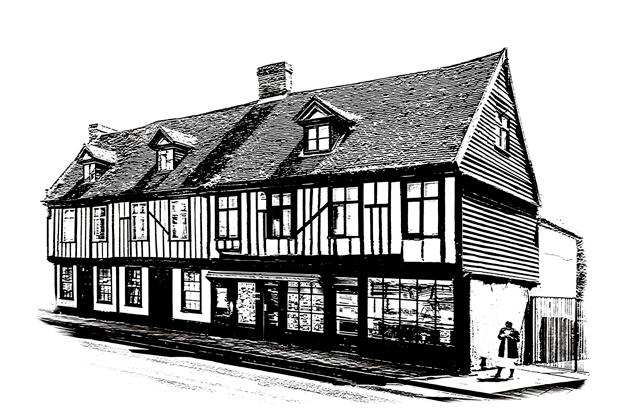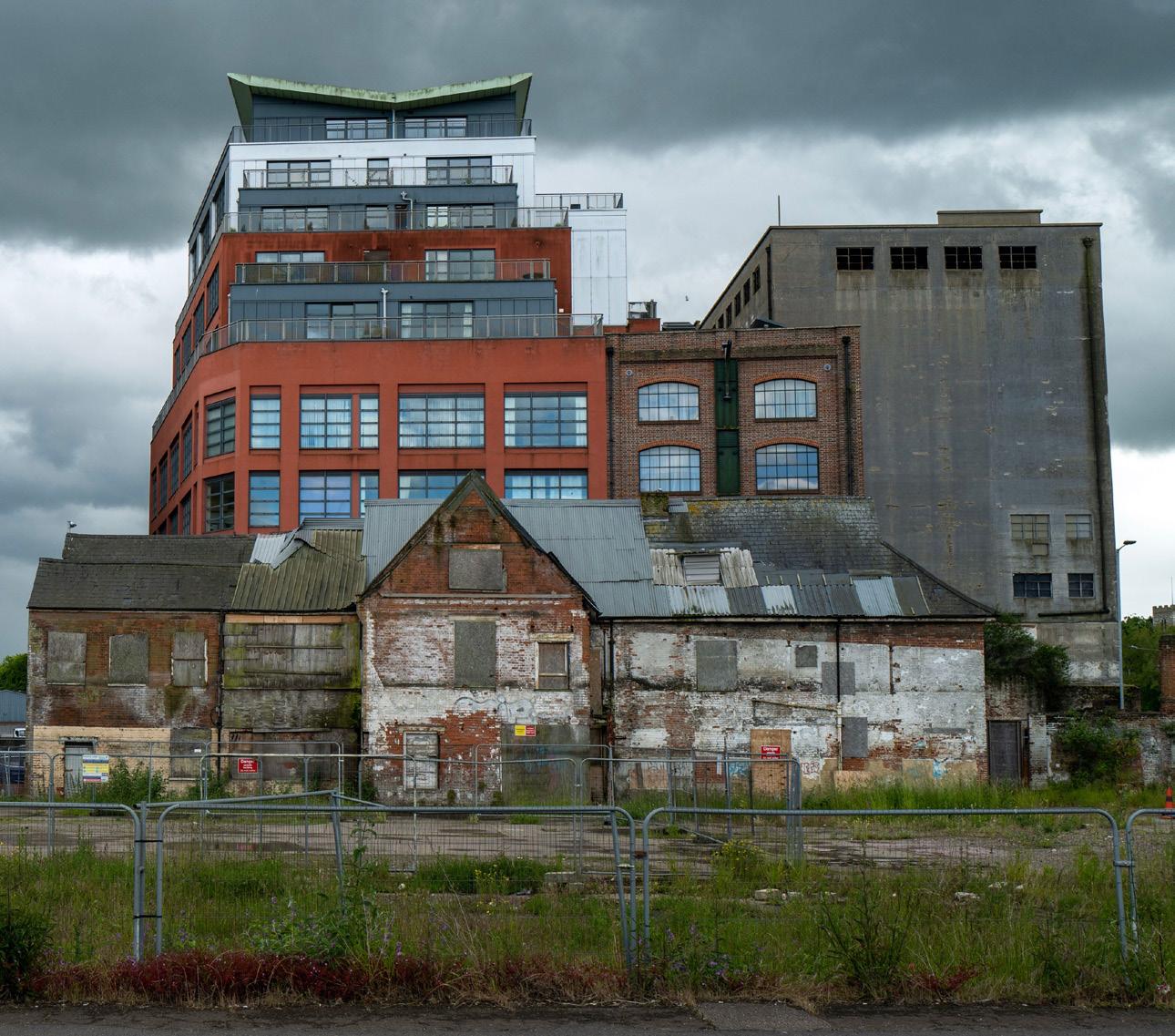





We celebrate our first eZine with a variety of fabulous articles for you to enjoy.
Well-known for his black and white photography, Steve Geer overcomes his shyness and finds his home of Chicago a great place for street photography.
Fascinated by the Japanese arts for many years, Honey J Walker writes about the art of Maiko.
Michael Cant describes his love and interest for Ely Cathedral where he always finds something new to photograph. He shows us how he captures detail of figures and monuments in this magnificent building.
Passionate underwater photographer, Nur Tucker, plays with liquid light above and under the waterline.
Patricia Tutt skilfully captures exquisite landscape and flower images using ICM (Intentional Camera Movement).
While holidaying in France, Angela Ford enjoys the opportunity of experimenting with various types of photography.
Members of the Creative Portfolio Group, run by David Harris, comment on their recent images. Rob Kershaw explains how he made his vibrant image, A Touch of Colour.
Torrential rain and sunshine didn’t spoil an afternoon’s photo walk in Ipswich, organised by Graham Lingley.


Welcome to our brand-new online magazine! We have a smorgasbord of captivating articles guaranteed to spark your creativity and refine your skills, so grab your favourite beverage, settle in, and lose yourself in the world of photography.
A huge thank you goes out to Moria Ellice, who expertly curated the magazine with an eye for inspiration. Her dedication to bringing you top-notch content shines through on every page.
And let’s not forget Steve Varman, the design wizard behind the scenes! Steve’s talent for transforming words and images into a visually engaging experience is truly commendable. And, also Patricia Tutt, who meticulously proofreads our publications, giving tips along the way.
This issue is bursting with insightful articles, from technical deep dives to thought-provoking explorations of artistic expression. Whether you’re a seasoned professional or just starting your photographic journey, there’s something here to ignite your passion.
Remember our website, your one-stop shop for all things ‘Creative.’ You will find past magazine publications, the Digital Exhibition 2024 awards and slideshow, recordings of talks and details of upcoming talks, workshops and events, as they become available - all designed to connect you with fellow photography enthusiasts and help you take your skills to the next level.
Events: On Monday 9 December at 19:00 to 21:00 GMT we have an online talk on ‘Astrophotography’ with Nik Szymanek. See our website at www.rps.org/ceg for details.
Enjoy the Light!

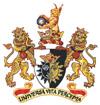
CONTENTS
3 ON CHICAGO STREETS STEVE GEER FRPS
7 THE ART OF MAIKO HONEY J WALKER ARPS
11 ELY CATHEDRAL MICHAEL CANT
14 LIQUID LIGHT NUR TUCKER ARPS
17 MOVING ON PATRICIA TUTT ARPS
21 FRENCH CONNEXIONS ANGELA FORD ARPS
25 CREATIVE PORTFOLIO GROUP
30 A TOUCH OF COLOUR ROB KERSHAW ARPS
31 PHOTOWALK: IPSWICH
COMMITTEE
Chair Clive Watkins ARPS creativecomms@rps.org
Secretary Graham Lingley LRPS creativesecretary@rps.org
Treasurer Nigel Rea ARPS creative.treasurer@rps.org
Digital Exhibition Coordinator David Rutter FRPS creativeimage@rps.org
Membership & Communications Coordinator Clive Watkins LRPS creativecomms@rps.org
Webmaster
Steve Varman LRPS creative.publications@rps.org
CREDITS
Editor Moira Ellice ARPS
Editorial Assistant Dr Patricia Tutt ARPS
Design Steve Varman LRPS
Cover The Time Inbetween Minutes and Seconds by Honey J Walker ARPS
CONTACT
Facebook: facebook.com/groups/rpscg
Flickr: flickr.com/groups/3510780@N20/pool Website: rps.org/ceg

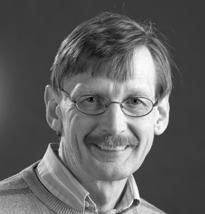
STEVE GEER FRPS

There is something wonderful about a great photograph of street life. I think it’s because we humans are naturally nosy. We like to stare, absorb the details and imagine the facts, but on the street, we don’t have permission to stare. All we get is a glimpse. The great thing about a street photograph is that we have permission to stare.
I live in Chicago, downtown, in the heart of the city, in the area called The Loop. For many years I was reluctant to take photographs of passing strangers. I had to overcome a certain amount of shyness to convince myself it was OK to point a camera at a stranger without permission. In the end it was the work of Henri CartierBresson, Joel Meyerowitz and Vivian Maier, to name but a few, that convinced me to overcome my shyness.
Chicago’s resident population is diverse in its beliefs, ethnicity and culture. Over its almost twohundred-year history, the city has been enriched by waves of migration. Folks have come from the South, and from Europe, from Asia and from Central and South America. In addition, the city itself attracts millions of national and international visitors each year. It’s a great place to people-watch and to see folks enjoying themselves and doing their thing. It’s a great place for street photography.

A street photographer, someone who takes images of strangers on the street, must necessarily be interested in people … in their interactions with others and with the urban environment. In his play As You Like It William Shakespeare tells us:
All the world’s a stage, And all the men and women merely players; They have their exits and their entrances; And one man in his time plays many parts …
By showing us those many parts, Shakespeare’s plays confront us with the nature of the human condition. In his characters we see our own shadow. I think that is also true of many great street photographs. The subjects are strangers, but in their actions, we see something of our own human nature. We see a shadow of ourselves. Perhaps then, in my street photography I’m chasing a shadow of myself.
Website: stevegeer.com
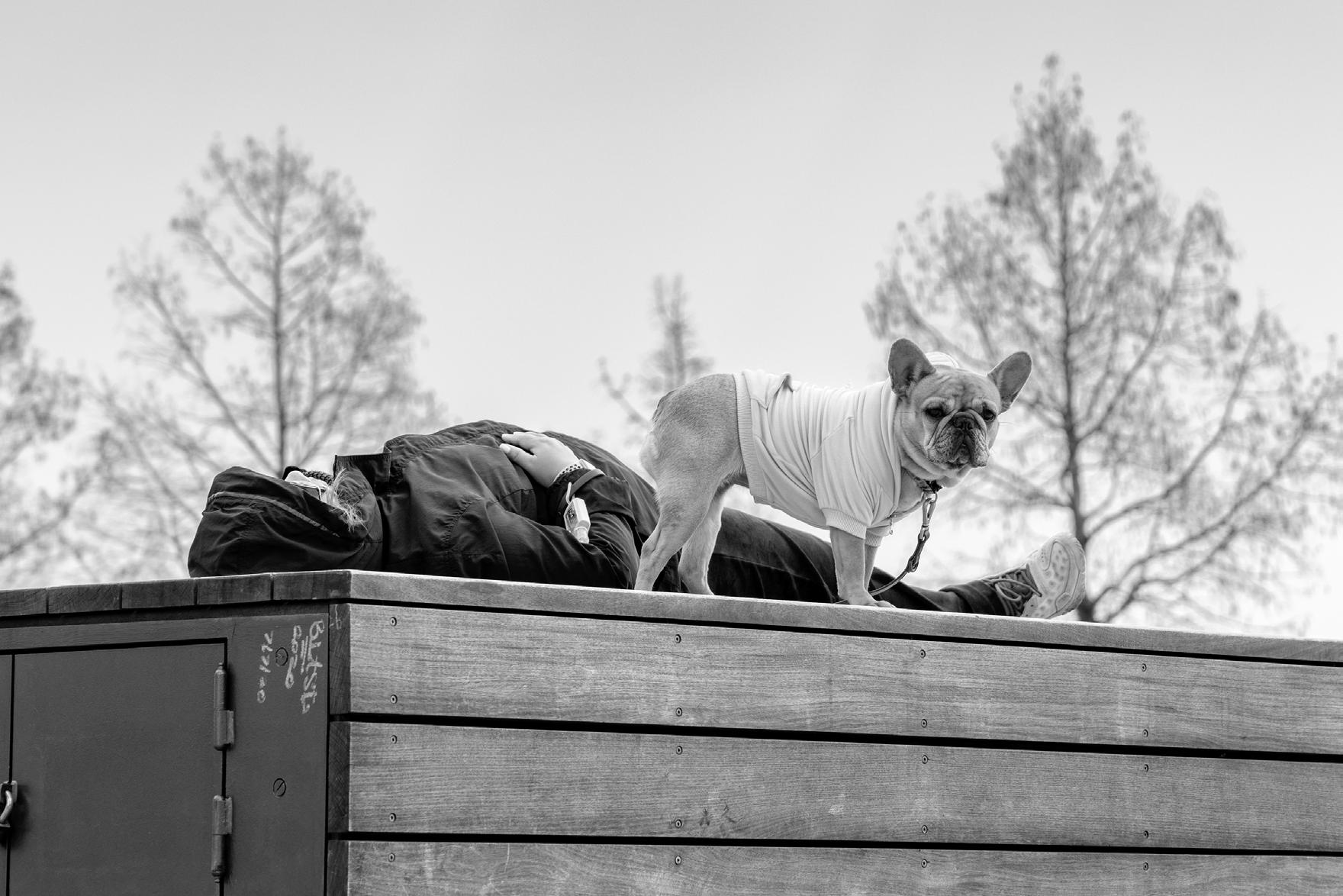






My fascination with Geisha as we refer to the art form in the west, started after reading Memoirs of a Geisha, when I was only a teenager.
I have travelled to Japan several times over the subsequent years and my fascination continued, if anything it intensified.
Firstly, perhaps I should give a little history about the Maiko, Geiko and Geisha. Equally it is important to clear up some misconceptions we have in the west.
A Geiko is a professional artist, entertainer, who excels in the Japanese arts. The word Geiko is only used in Kyoto which is the centre of this traditional art form and was originally the capital city of Japan. In English the word geisha is more commonly used because early interactions between the Japanese and foreigners mostly took place in Tokyo and other major port towns outside of Kyoto.
The art form started in the 1600s within the pleasure districts of Tokyo but the Geisha were men, the first female Geiko did not appear until 1751. In 1872 after Emperor Meiji came to power, the regulations of the entertainment industry were dramatically revised. The Geiko associations and pleasure districts were clearly separated. The law clarified that Geiko did not participate or engage in any sexual activity.
In the west we have mistakenly believed that Geiko/Maiko/Geisha were in fact high paid courtesans, beautifully made up, dressed in Kimono and had some artistic skills but who’s main responsibilities were to entertain and satisfy the requirements of wealthy businessmen and nobles. This does an enormous disservice to the profession.

The reality is that these highly trained female artists are just that, artists.
The first steps to becoming a Geiko is a fiveyear Maiko training program. The word Maiko means dancing child. In the past young girls used to be sold to lodging houses (okiya) at the age of seven but obviously that is illegal today. Generally, the age to start training today is between 15 and 16 years old. The program is very intense with several hours spent each day learning the art of tea making, learning to play the shamisen (Japanese musical instrument, similar to a lute), dance, calligraphy, entertaining games and interesting, informed conversation.
Traditionally the Geiko and Maiko lived in houses run by a retired Geiko and that is still the case today. The young Maiko leave their families behind to live in a house of women, fellow Maikos and Geikos. They live as a community but with a strong hierarchy.
They leave their families and previous community behind to embark on a life of dedication to their art. In many ways their lives are similar to those of a nun within a religious order. The life is about dedication to honing your skills as a performing artist who also must remain celibate. Romantic relationships are forbidden.
My fascination with these women was really based around a complete ignorance of the dedication and artistic ability of the Geiko/ Maiko and more about the understanding of these women as a westerner, or what I thought I understood.
Fundamentally I could not understand why in the 21st centaury any woman would choose a celibate, regimented life over personal freedoms? Equally historically the predominate clients for Geiko/Maiko are wealthy men. Why would any woman, with today’s independence choose to follow this path?




The number of women making this career choice has reduced dramatically but there are still about 300 working on Kyoto’s five hanamachi (Geiko districts) today.
What I discovered over several trips to Japan and especially to Kyoto was a strong, independent body of female artists who are highly intelligent, intellectual and dedicated to their art form. They knowingly give up more personal relationships to dedicate themselves to honing their craft and with that discipline comes enormous empowerment.

In a way, they become a modern-day goddess.
The ultimate, untouchable woman.
They look beautiful, demure, shy.
They dance with a lightness of foot.
Their bodies hidden with swathes of embroidered silk kimono.
They use fans to gently flirt, songs to soothe, music to stir the senses.
Ultimately though they are unattainable.
These incredible artists perform, amuse, engage, but their true identity is hidden behind an enigmatic smile and a thick layer of white makeup.
My challenge in the series of images I created was to give justice to their beauty, strength and history but in a way that felt respectful and contemporary.
I rarely work on a series of images or body of work that has such a strong intention from the outset, I normally allow my images to evolve and develop their own identity without too many constraints. Whist I still allowed myself the freedom to explore different techniques to create the images, fundamentally the over-arching principle was to show these female artists as multi-layered, strong women.
All the images are made using in camera multiple exposures, ICM and Procreate.

Website: honeyjwalker.com
Instagram: @honeyjwalkerphotography



MICHAEL CANT
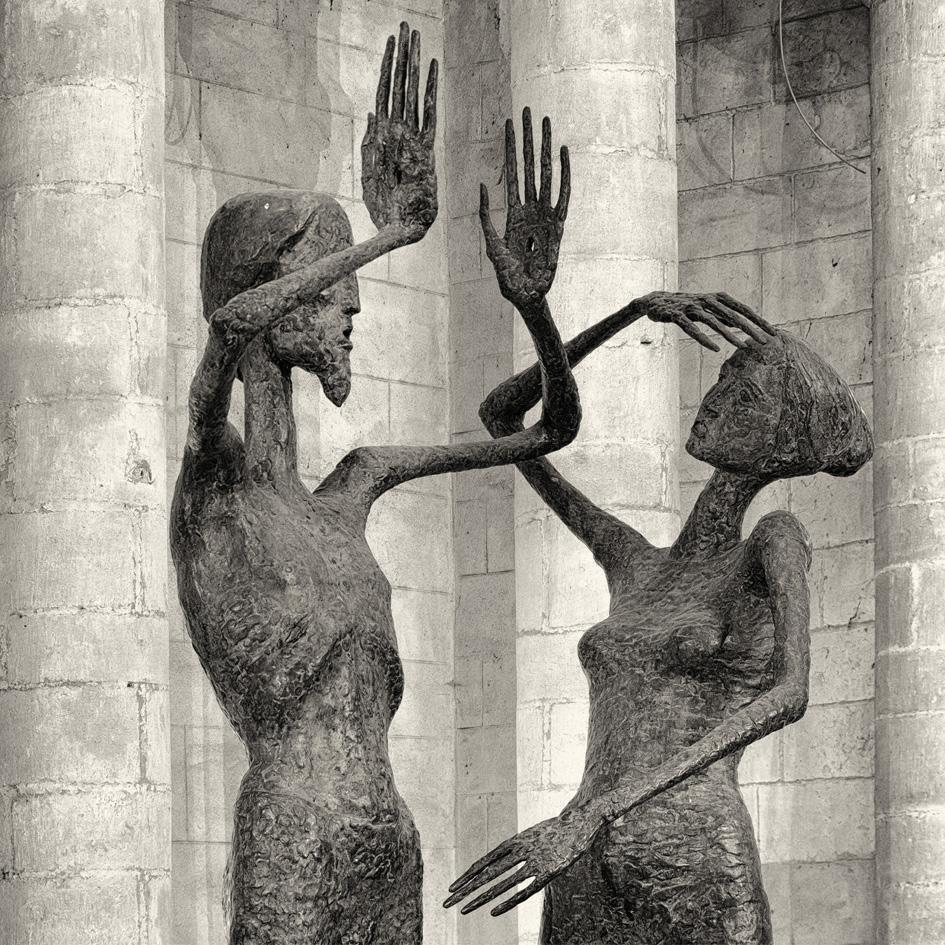

If I had to choose my favourite building it would be Ely Cathedral. If asked my reasons they would include its history, its age, and its position atop the hill in the small city (yes, city!) of Ely in the flat and watery landscape of the Fens, but that doesn’t convey the emotion of my feelings for the place, nor the way my heart soars every time I enter the building. I simply love it.
Back in the days before Covid I started to visit Ely with the specific purpose of photographing the cathedral. On one memorable occasion I went there early on
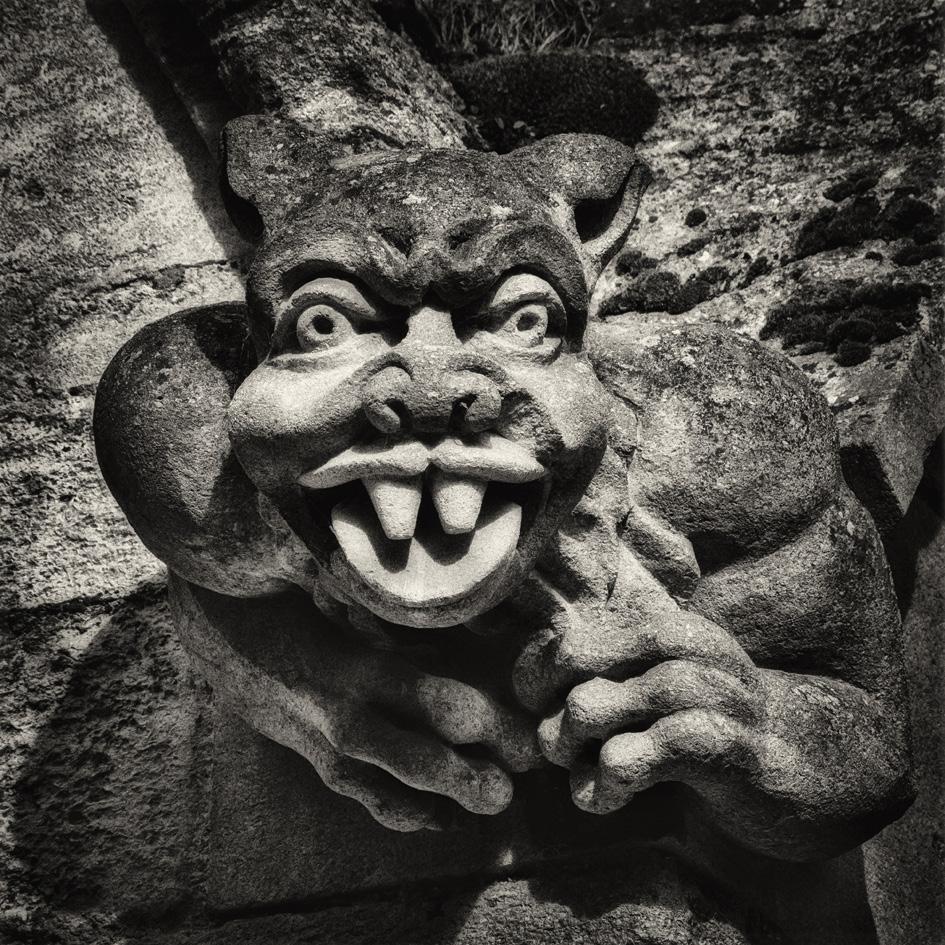
a winter’s morning and, apart from the person on the entrance desk and a cleaner somewhere in the distance, I was the only person there. It felt like the whole place was mine. That ancient building with its centuries of history and the ghosts of countless thousands who have worshipped there, was all mine. It was intoxicating.
My initial efforts were concentrated on the inside, mainly photographing the many monuments and tombs therein.
As we all know, Covid scuppered many of our photographic aims for
some considerable time but in early 2023 I resumed my project by photographing the outside of the cathedral as well as continuing to photograph inside.
On the outside there are many wonderful grotesques, some of which are high up, so they probably remain unseen by most people. To do them photographic justice I used a long zoom lens (equivalent to 200-600mm on a full frame camera). One can only try to imagine what was going in the masons’ minds when they were carving the figures. We don’t know the

reasons for such wild designs; some say that the figures are nothing more than the playful representations of the masons’ minds, but it has also been suggested that they were put there to ward off evil spirits. Whatever the reasons for their existence they made wonderful subjects for my project.
Inside, I decided to concentrate on the faces of the effigies on the tombs and monuments as well as those carved into the fabric of the building. To that end I revisited some of the subjects of my previous efforts and homed in on their faces. The more I looked the more
faces I found and, using my long lenses where necessary, I took many close-ups of the stone faces of people who have played a part of the cathedral’s history.
I then decided to concentrate on the hands of the figures. Once another visitor asked me what I was photographing as I was framing a hand of a tomb effigy. I showed him some of the images that I’d taken that morning, and he was so impressed with the idea of concentrating on close-up details that he started to take some himself on his phone. It’s always satisfying to inspire other people.
My RAW files are in colour but my screen is set to show monochrome as that’s how I process my photographs so I like to have an initial idea of how they will look. But I hear you say, this is the Creative Eye Group and what I’ve described so far sounds like ‘straight’ documentary photography. In my defence I like to think that my processing in Photoshop Elements and Nik software, combined with my compositions, satisfies the requirement to be creative – I hope you agree!
Each time I visit the cathedral I find more images to take. It may be a new

angle on a tomb or the way the light from a window highlights details of the building’s fabric. It could be something that I’d completely ignored on previous visits but now I see its potential for a photograph. The only drawback is that Ely is an hour’s drive from my home but that is a small price to pay for something that has given me, and continues to give me, so much pleasure.


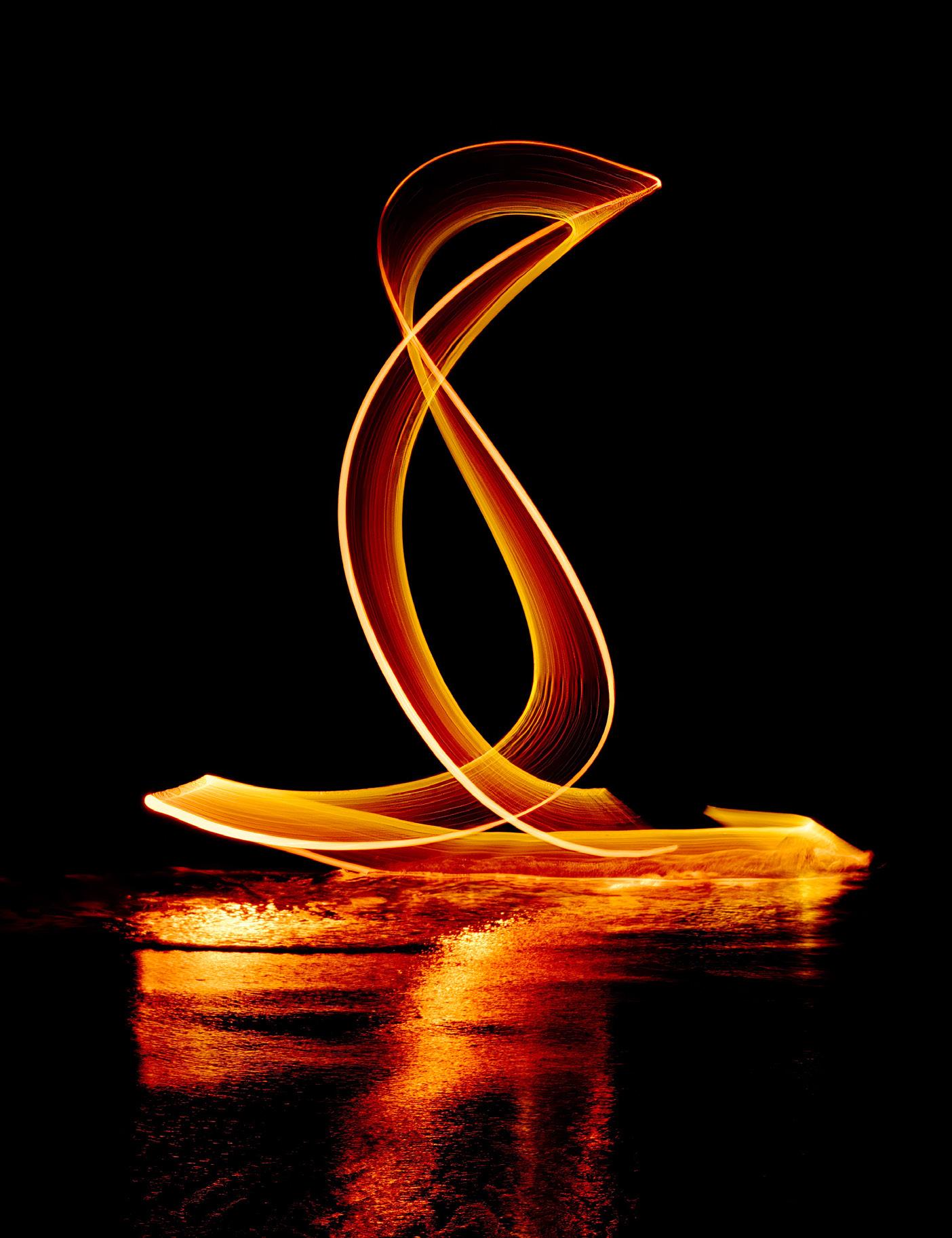

Iwas not always a photographer; in fact, I had no clue that I had a creative side in me. I am an economist and I spent more than two decades in London as a stockbroker. Once retired, I wanted to pursue a hobby that I was always passionate about – Scuba Diving and underwater photography! I love water and being immersed in water. I always think that I was a fish in a previous life. Nothing gives me an equal amount of tranquillity than being immersed in water.
When you are passionate about something, you spend hours without realizing how much effort and attention you put into it and that
naturally brings success. Time spent underwater and several trips around the world brought me worldwide recognition as an underwater photographer and I won many awards. In this competitive mood, I quickly understood that taking a perfect shot of an animal with great exposure and focus and rule of thirds is not enough to attract the attention of Judges. I had to bring something new to the game and surprise them. I had to come up with something that they have never seen before.
Up to the time when I used light painting, I tried many techniques: long exposures,


vintage lenses, motion and zoom blur, in-camera double exposure etc. Then I came to a bottleneck, I could not think of anything new to add to the game. One day I saw an advertisement of an RPS workshop with Michelle Essenson for light painting and I registered. That workshop with Michelle opened a whole new dimension for me. During that wonderful workshop with her, I not only learnt how to execute light painting but also came up with ideas that I could use underwater.
The first time I used light painting with EL wires to create a helical shape with my Nikon D500 I did an in-camera double exposure with a seahorse portrait. This gained me a very prestigious award in the Underwater Photographer of the Year contest in the portrait category. I enjoyed light painting so much; I started using this meditative tool above the surface of
water too.Sometimes people find me at the beach waving my light painting ball or my liquid light blades on the surface. Other times I am in a dark room waving some bicycle tire wrapped in LED lights.
To achieve the helical shape around the seahorse, I spent a month at very shallow depths at the beach with camera and housing on a tripod, waving an empty bottle wrapped in wires in front of it. I did a lot of sessions in a pool as well. It is so meditative that you can create endless fun playing with ideas that do not have any boundaries. I experiment with anything - empty colourful shampoo bottles, keyrings, acrylic blades, EL wires.
In these pages I want to give you a glimpse of what can be achieved with light painting either as a single shot (one very long exposure) or as a double exposure in camera.

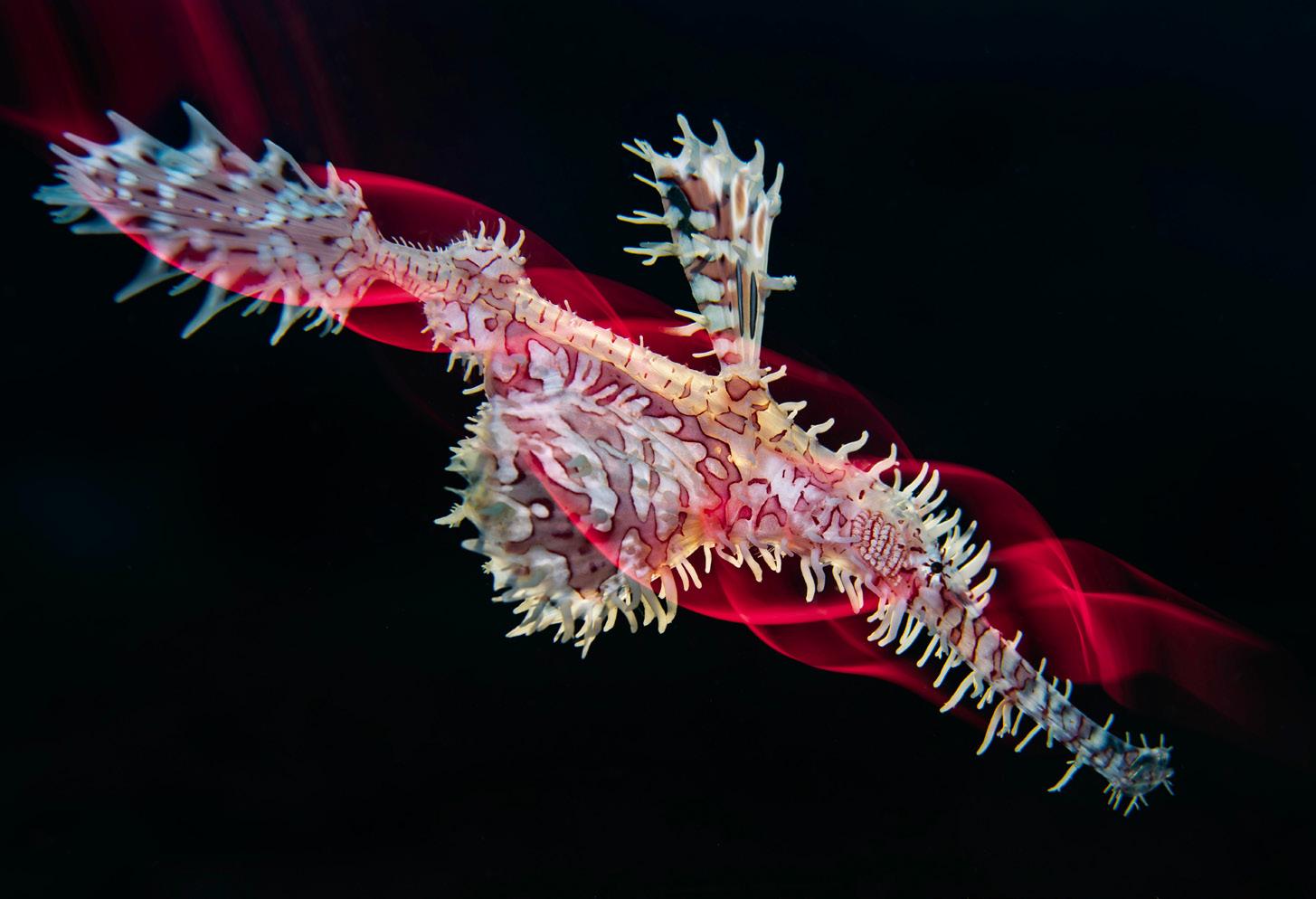

For those unsure of what light painting is - it is one long exposure, camera on a tripod and taken in complete darkness. One leaves the aperture open and start painting with a light source in front of the camera. Camera records all this and when you finish you go and turn the camera off. It is one hell of a fitness test though; at the end of each session, I find myself covered in sweat and panting. Opportunities are limitless. The appeal of light painting lies in several compelling emotional and psychological experiences:
Website: nurtuckerphotography.com
Instagram: @nurtuckerphotography
Light painting allows for an unbounded realm of creativity. Photographers can wield light like an artist uses a brush, crafting intricate designs and ethereal patterns. This artistic freedom enables individuals to express their inner visions in a unique and visually captivating manner.
Successfully creating a stunning light painting requires practice and skill. The satisfaction of mastering the technical aspects of long exposure photography, combined with the aesthetic accomplishment of a beautiful image, provides a deep sense of achievement and pride.
The process of light painting often feels magical. As the light sources move through the air, their paths are recorded by the camera, revealing astonishing images that are invisible to the naked eye. This element of surprise and the unveiling of unseen beauty evoke a sense of wonder and excitement.
Light Painting: Bridges the gap between modern technology and traditional artistic techniques. It appeals to those who enjoy experimenting with photographic equipment and those who appreciate the historical aspects of visual art.
The act of light painting can be meditative. The repetitive motion of moving light and the focus required to perfect each shot can bring a calming and almost trance-like state, providing a therapeutic escape from daily stresses.
The joy of light painting is rooted in its ability to blend creativity, discovery, relaxation, collaboration, and technical mastery, providing a fulfilling and enriching experience.

Having been a ‘straight’ photographer for over fifty years, I found myself adopting several new techniques since the onset of Covid, the lockdown, and the proliferation of zoom photo talks.
ICM (Intentional Camera Movement) is one of my favourites with landscapes, seascapes and garden scenes being my main focus so far. I’m keen to tackle architecture, which has always been central to what I do, but the Isle of Man, where I live, is not the best place to be an architectural photographer.
On my first outing with ICM in mind, I was looking for an image to enter in a club ‘Glens and Streams’ competition. In the Depths of the Glen was the result. This works equally well in mono – not all ICM images do.
Coming home one evening, I drove up the Lhergy Cripperty road to get a view of the hills and the Plains of Heaven, so-


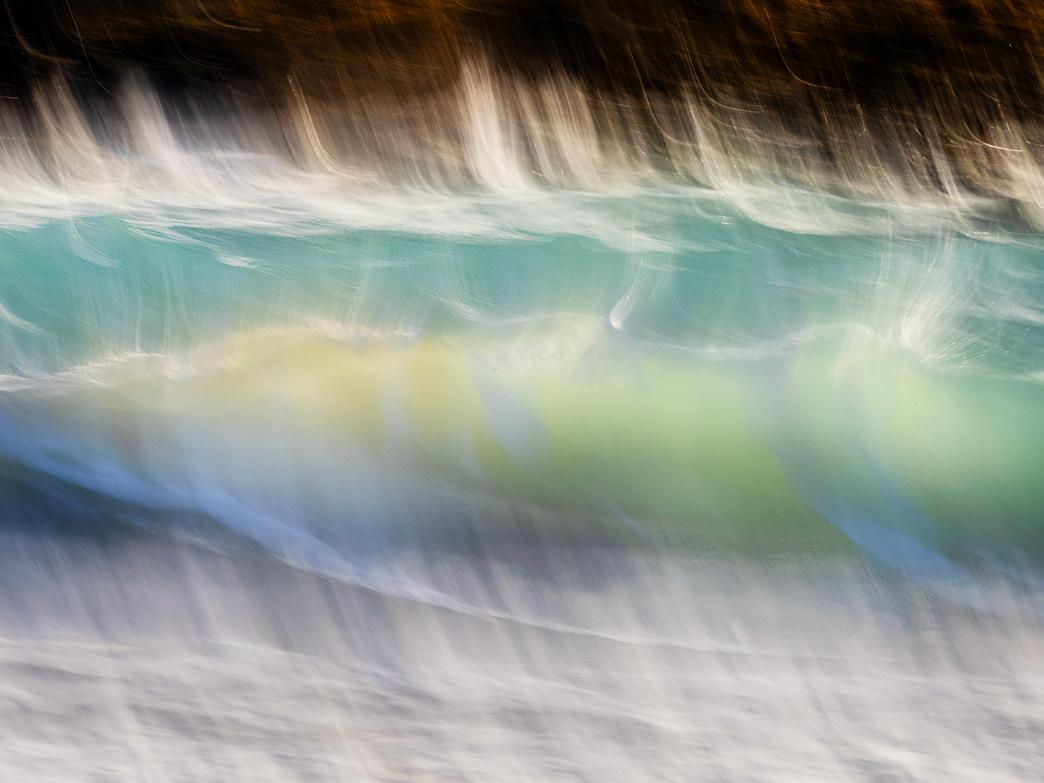


called because the painter John Martin allegedly used the modest view as the starting point for his dramatic 1853 allegorical painting of the same name. Experimenting with lateral sweeps of my camera, I got several usable images – my largest number in one ICM session to date. Most of them work as full format or in 16:9 ratio. One of these shots, which I called Homeland – texture of the hills, was entered in a local curated exhibition held in the Manx Museum, and was used for the exhibition poster.
Wave at Fenella and Towards Scarlett were both taken in the early afternoon in differing light conditions and on opposite sides of the Island.
The next set of images were produced when we went out to lunch for my granddaughter’s birthday. Stepping outside, I spotted a flax plant and swept the camera in a range of upward and lateral movements. With these, I combined and blended two in Photoshop, played with the colours, and applied filters – mostly distort/ shear. The result is a set of abstracts that work in single-colour or multi-colour

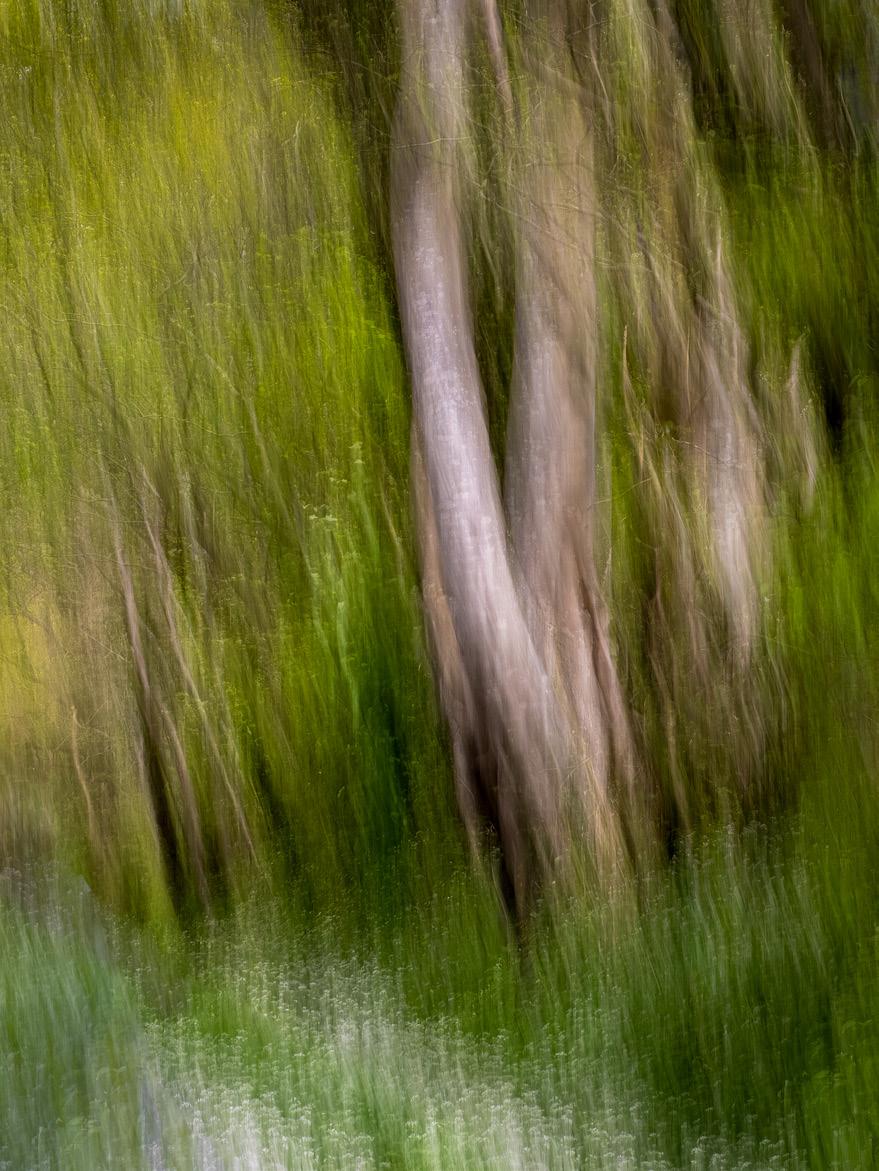
combinations: Summer triptych is one of the outcomes. The glory of abstracts such as these is that you can be totally whacky with colour, and flip them landscape or portrait.
Visiting the small arboretum at Garey ny Cloie, I was taken with the dance of the dangling mini branches of a copper beech. Despite being pleased with the results, they didn’t work as single shots, so I assembled them as a triptych. Experimenting with the colour tones – cold to warm, I opted for the slightly warm version used here in Dancing leaves. Further experimentation with blend mode produced the vibrant colours of Summer Jewels.
Marown Avenue and Filtered light were taken under trees in spring, the former when the wild garlic was rampant. A desaturated version of Filtered light is in the recent Creative Eye magazine 95.
My camera is always with me in our small garden and ICM has produced some interesting results. Alliums was a first look at some new plants bought recently.
Roof lines shows that I needn’t be so fastidious in selecting architectural subjects for ICM – this trio is of a grotty garden shed with a corrugated asbestos roof.
I visit our local polo club, Triskelion Polo, and tried ICM on a horrible wet day. Polo in the rain is the result. I have done nothing to it apart from tweaking tone and contrast and stripping out the yellows, as the grass is often a rather unpleasant green.
As someone who grew up hooked on the sights and smells of the darkroom, printing remains central to my photography. My digital darkroom is kept going by my membership of a photographic society that has ten competitions per season, in each of which I can enter five A3 prints. It can get to be quite a production line. There are only two of us left who just enter





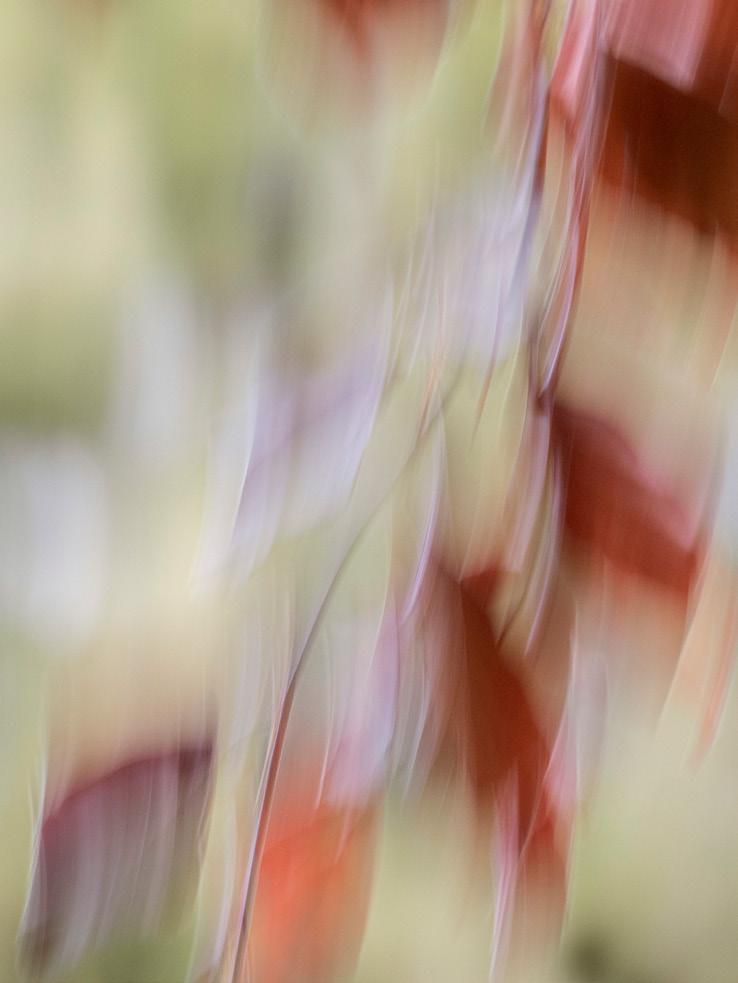
prints. Most members enter a mix of prints and digitals, or all digitals. I used a range of media for the images shown here. For those that suit a matt art paper I used Fotospeed’s Platinum cotton or NT bright white and for those that need a more lustrous paper, I used Fotospeed’s platinum baryta or Permajet’s titanium lustre. The latter is terrific for water, glitzy architectural subjects and vibrant colours, but you need to boost brightness to compensate for the base colour of the paper.
Is ICM here to stay, or is it another fad that oversaturates the salons and magazines, only to fade back into obscurity? My own view, perhaps because I like it, is that it’s here to stay, but that it may not remain as high-profile as it is now. It’s a delightfully serendipitous process. You never fully anticipate the outcomes, and often need to lift tone, values and colour, or play with subtleties. Images can lend themselves to various additional techniques, which further expands the options.
Website: patriciatutt.com




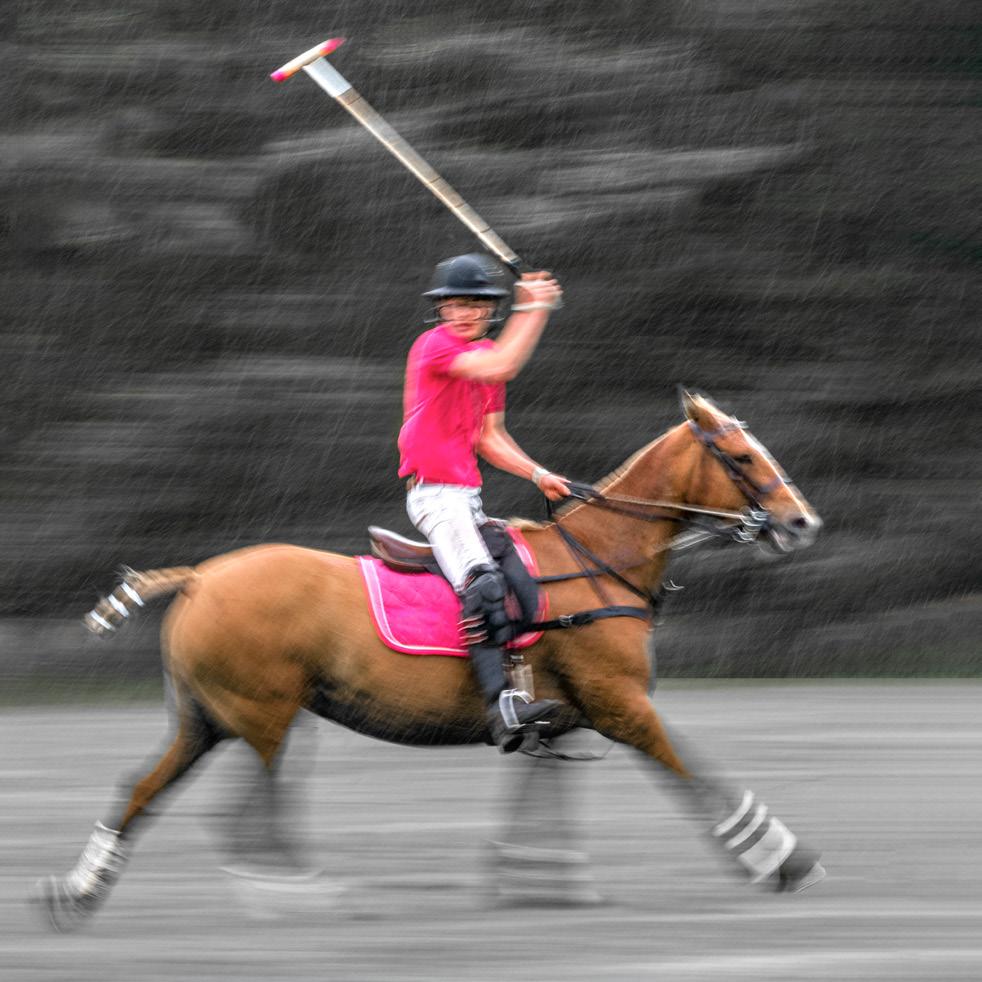

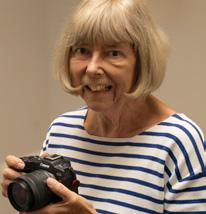

My first visit to France was in my teens leaving Penzance behind to travel to Tours and stay with a French family. This became a regular trip and after my studies I took a post teaching English as an Assistante Anglaise in a school in Niort for a year.
Following many trips to France my husband, Roger, and I purchased a house near La Rochelle twenty years ago. Through monochrome prints, digital images and employing various photographic techniques learnt along the way, I have aimed to present a
personal and evocative view of the Charente Maritime on the west coast of France.
To be near the sea has always been an inspiration, not just from a landscape point of view but to capture how local people work within the fishing industry and especially in the harvesting of oysters. The work has to be done at low tide and is therefore done quickly. Keeping a close watch on my Tides App and the time of day with regards to best lighting conditions, I have returned to the oyster beds on many occasions
with wellies and camera, making sure to keep out of the way as oysters in bags are loaded onto the tractors or turned around on racks. A nearby fort, accessible at low tide provides a good vantage point to take photos of the oyster workplace, however, to gain access, it’s necessary to take a tour each time. I should be an expert on the fort’s history by now!
Fishing pontoons or Carrelets are recognisable structures along the coast of the region. They are very photogenic with huge nets where the catch is landed, unfortunately,


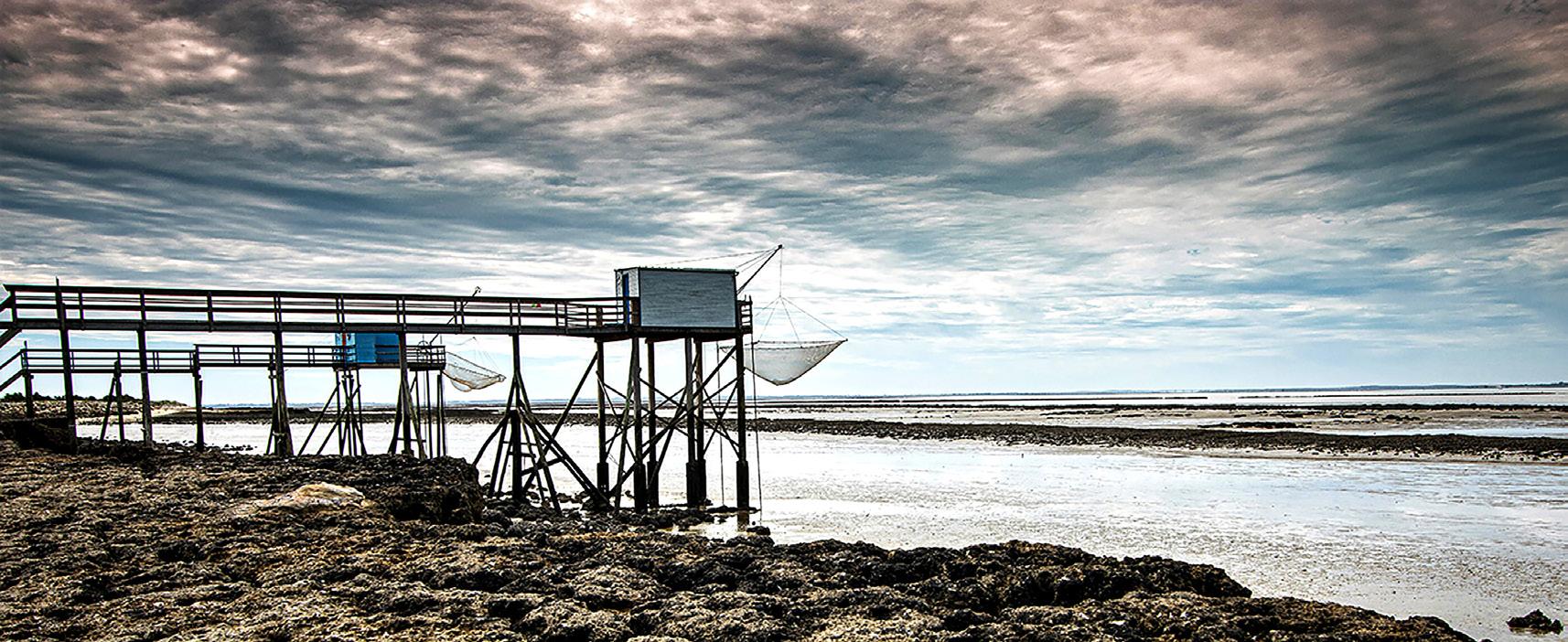

with not so many fish these days. I have photographed many of these structures and am always tempted to take ‘just one more.’ I have tried various techniques in portraying these pontoons, including ICM and slow shutter speed, as well as using both mono and colour.
Crops in the fields around our French house alternate between sunflowers, flax, poppies and corn. Most days, a walk with the camera provides a reflective moment with nature as the fields change colour and shape with big skies, clouds and sunsets. In this environment, the technique chosen depends on light, time of day and the crop. Fields of flax look good from a distance but are not so easy to take up close. Sunflowers provide their own challenge: for me they are always looking the wrong way, no matter how you try to sneak up on them!
Methods used have included a panning effect from the passenger seat of a moving car with an understanding driver, providing many attempts at producing that perfect image. However, one day I managed to find a more unusual view on a misty morning and was quite satisfied. Nevertheless, I always remain tempted by a field of sunflowers.
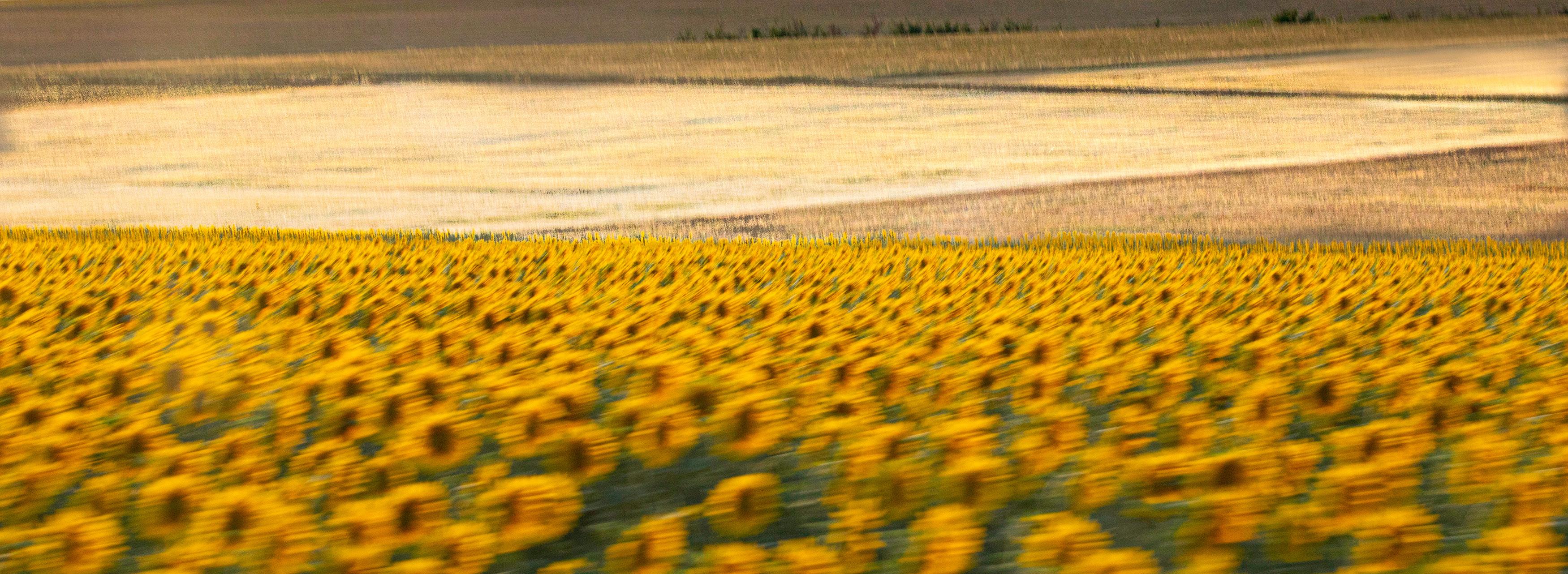
The best camera is the one you have with you.
Chase Jarvis
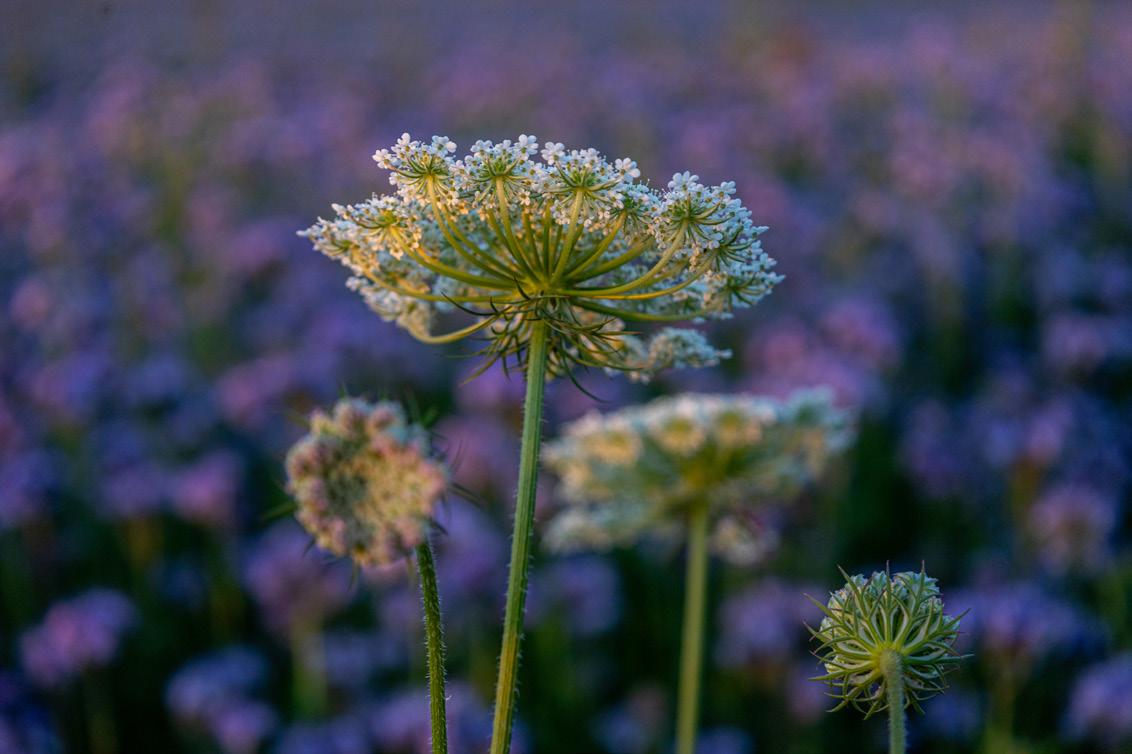

La Rochelle is an attractive, bustling town of architectural and historical interest. Without a doubt, the most photographed part of La Rochelle is the Vieux Port [the old port] with its two iconic towers - an irresistible and immediately recognisable view. So, how could the Vieux Port be portrayed in a more unusual way?
I took a series of photos of the two towers from a boat with an infrared converted camera. People on the boat reviewed the pinkish coloured images on the back of the camera with polite, bemused smiles. However, in post-production, the pink images can be transformed to monochrome allowing a range of dramatic or subtle interpretations. Rather than change the pinkish tones to monochrome in the converted camera itself, better results can be achieved from using the original images.
Local events usually provide opportunities to get unusual, quirky photos. On these occasions I ask myself “Is today an Infrared day?” If so, then I only take the infrared camera out with me.
In nearby Rochefort, work began in 1977 on the construction of a replica of the frigate Hermione. In 2015, completed and being considered sea-worthy, she set sail for America, repeating her voyage of 1779 supporting Americans in their fight against the English. The Frigate’s arrival back in Rochefort was another opportunity to try infrared, evoking a time gone by with local people and others dressed in period costumes.
Other ‘infrared days’ included an annual music event held in a beautiful garden, opened specially by William Christie, a famous musician, conductor and expert in Baroque music to be contrasted by a Country festival with everyone dressed in true Western style and taking part in serious Line Dancing.
The selection of images shown here aims to express my personal connection and love of the place that I have enjoyed getting to know over the years.
Website: angelafordimages.com
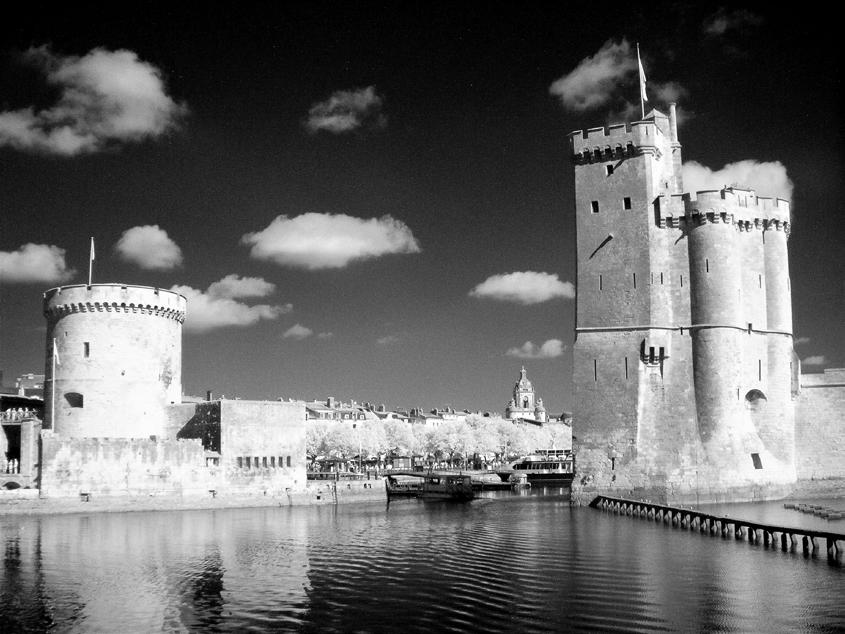


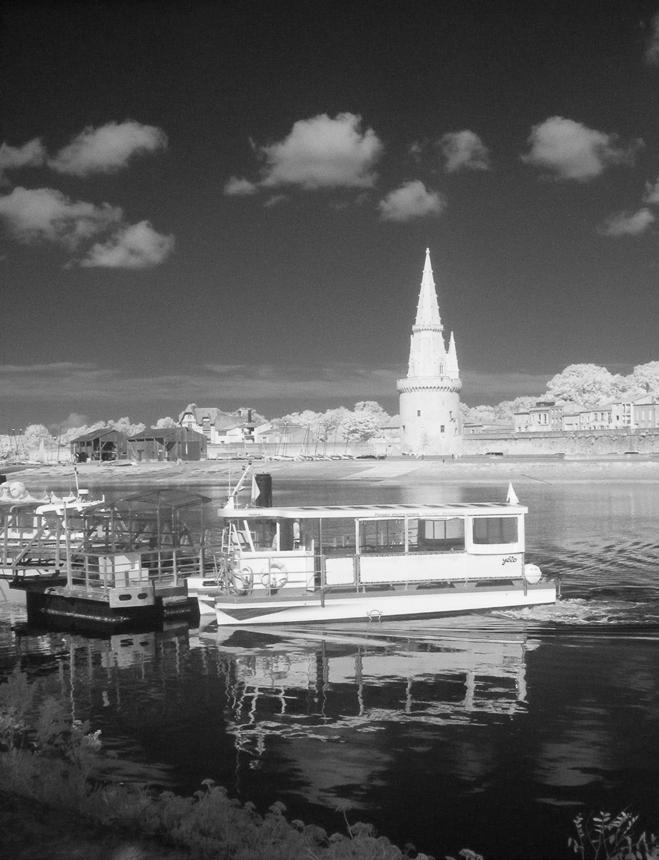



Do you want to receive constructive feedback on your creative images? The Creative Portfolio Group might be just what you’re looking for. The group holds image discussions every two months via Zoom and monthly written comments. Our members have a range of experience levels and practice a variety of techniques with multiple exposure work being particularly common. We are welcoming and friendly.
For more details, contact David Harris: creative.portfolio@rps.org

In an old, semi-derelict tile factory in France I was most attracted to the windows. I created a multiple exposure of three, playing with perception slightly by defocusing one of them, as I liked how it reminded me of a dusty or smoky room when it was out of focus.


During the summer I am truly obsessed with all types of grasses and the way the light plays through them. Garden designers position these grasses to catch the light and when you witness this it’s truly beautiful!
The tree and fungus are intended as a mirror image to illustrate the idea that the two are dependent on each other. The image is composed of layers with various blend modes and colour shifts.
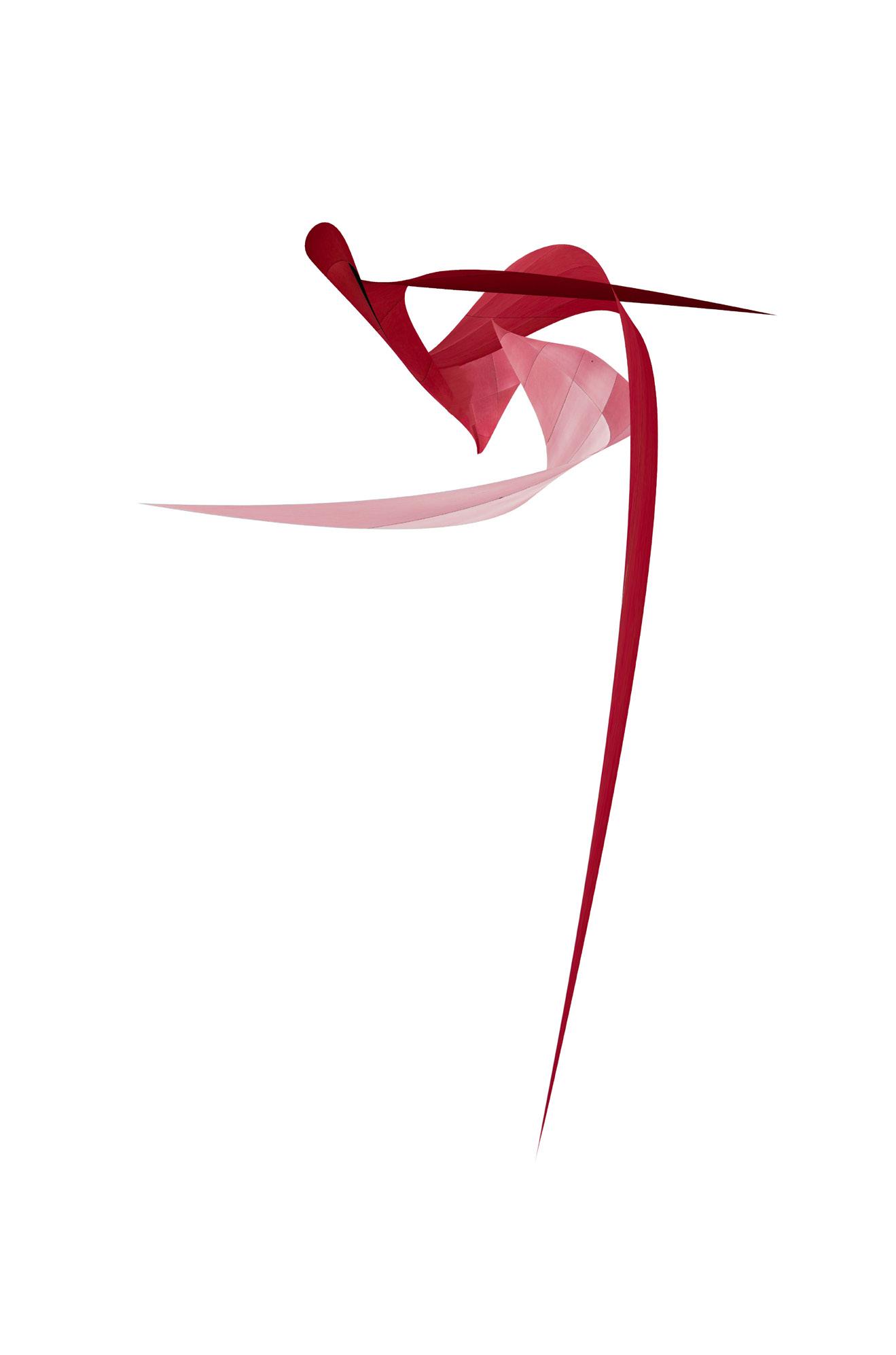
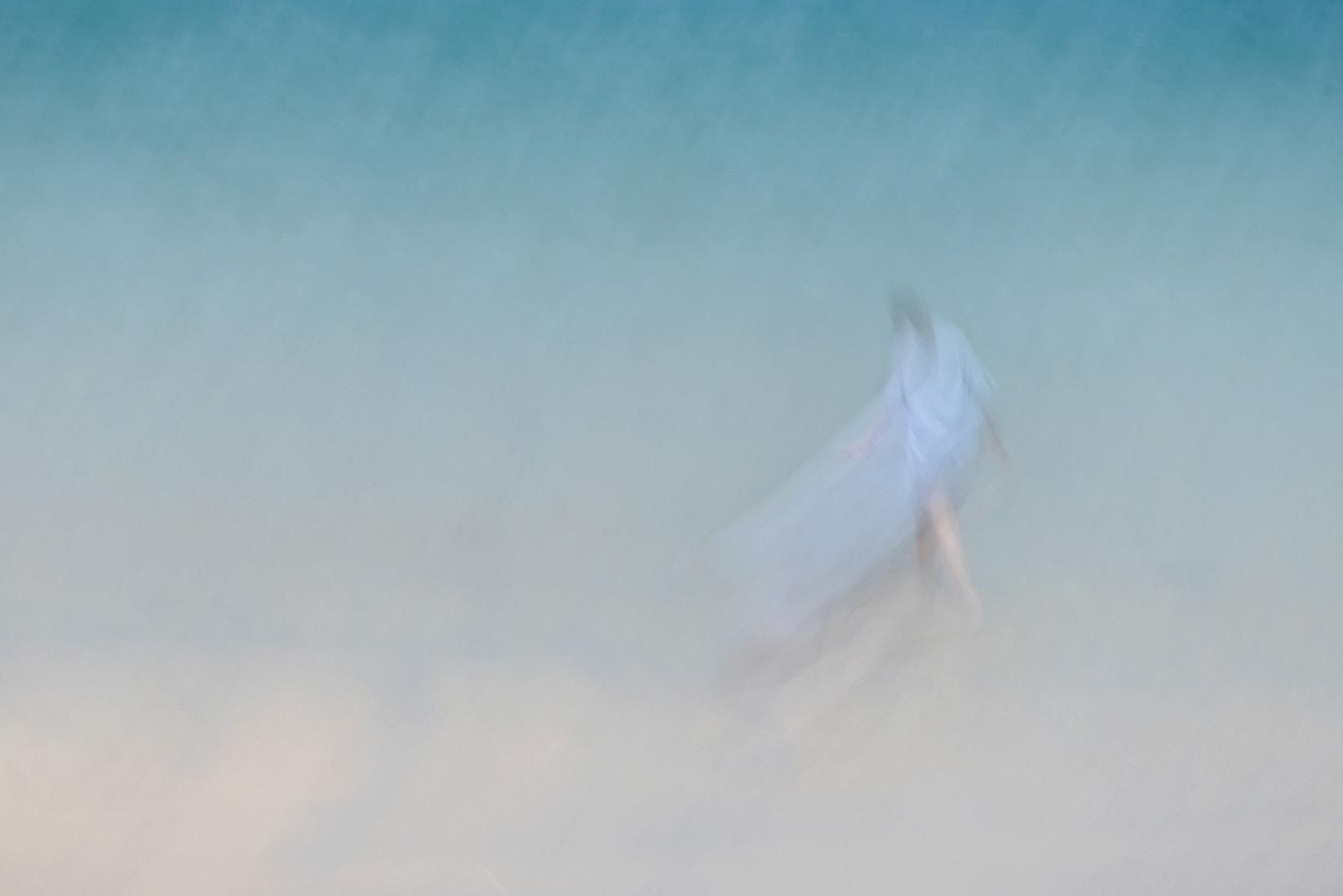
RED ARCH REARRANGED
I manipulated an image of the ‘Red Arch’ in Bilbao by extreme use of the ‘Warp’ tool in Photoshop.
The group enjoyed the image but suggested that I remove a small black square in the centre and give the dancer a bit more space, allowing them room to straighten up.
I was drawn to the calm scene of the lady walking along the beach, lost in thought. By using the ICM technique I was able to add an ethereal and peaceful feel. I composed the image leaving a lot of negative space to further give the sense of tranquillity. Canon EOS 5D Mark IV with 300mm lens, ISO 50, 0.8 secs at f/11

My image was taken in April in France. I was attracted by the textures in the wall around the cellar door. The image is a multiple exposure with colour shifts between frames.

This photograph is a single shot. It was taken at the Design and Architectural Centre in Copenhagen on a recent trip. The Centre itself was a disappointment but this staircase was spectacular. I just flipped it on its side to get my wall of colour.

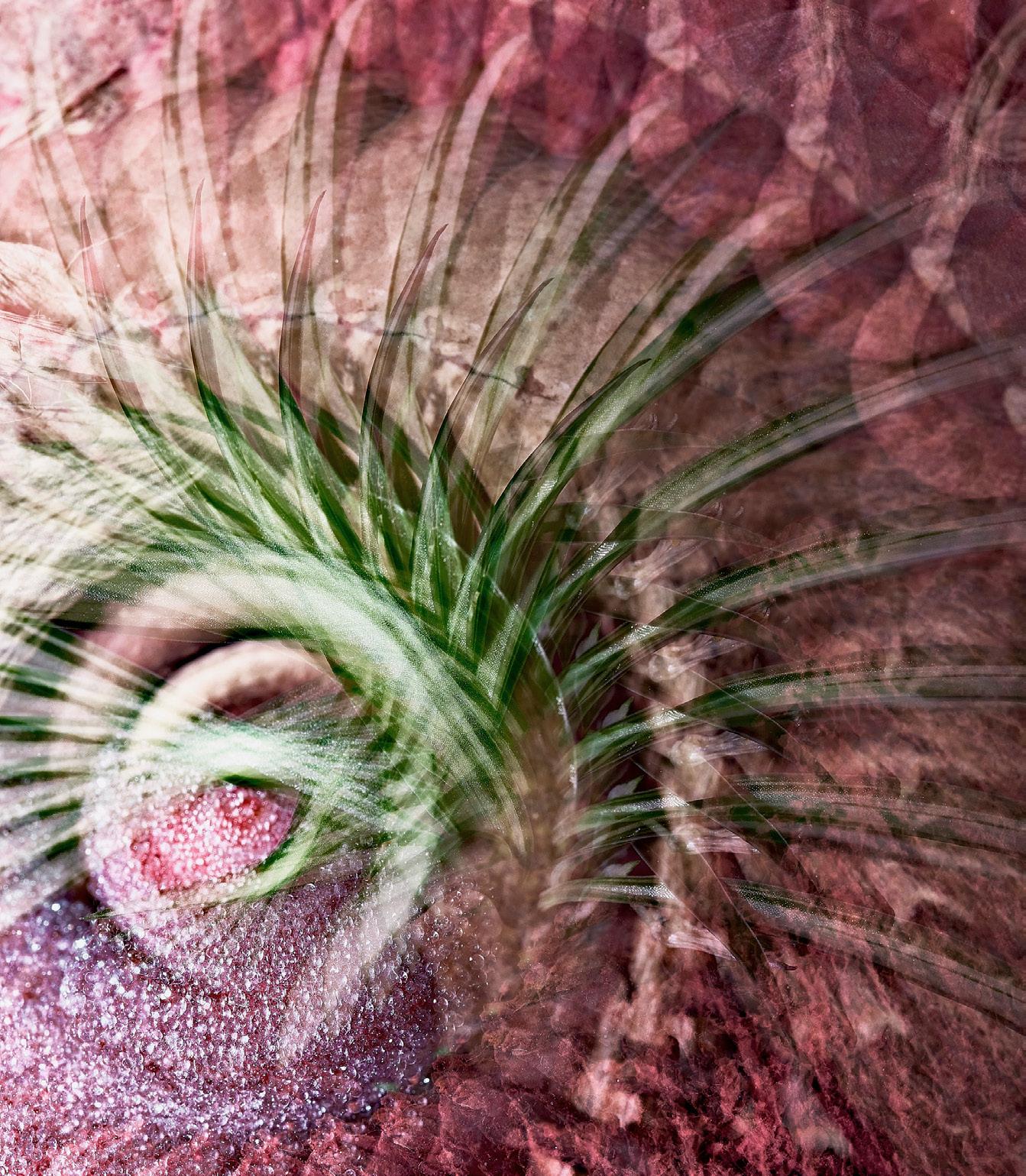
A macro shot of a water droplet on a dandelion seed standing in a milk and water mixture, this helps to hide the plasticine and creates a softer effect. The card used as the background is orange with white daisies. I then rotated the image 90° clockwise.
This is part of a project using common household and garden objects and using minor processing (not Photoshop etc) to produce an image that might suggest something new.
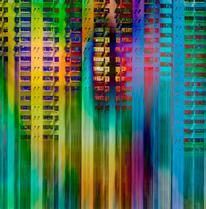
ROB KERSHAW ARPS





The lovely summer weather we have experienced so far this year was true to form on the King’s birthday. A walk was held in Ipswich with the theme ‘Industrial to Leisure’. A torrential downpour followed by glorious sunshine and then more rain, did not deter the hardy souls that took part.
The walk presented opportunities to take images of buildings and objects dating from the 1600’s through to the modern day.

